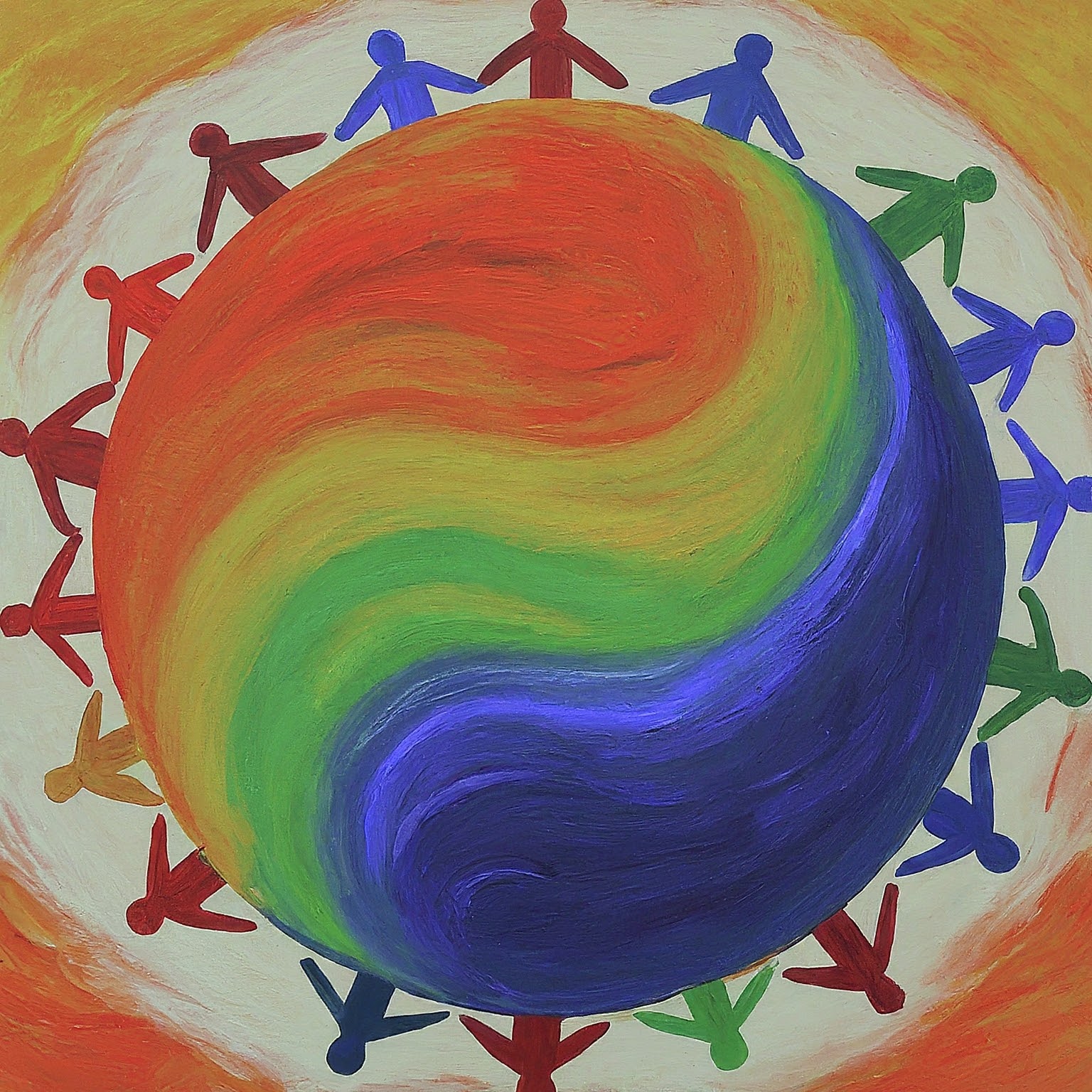World Population Day 2024
World Population Day is observed annually on July 11th. It was established by the United Nations in 1989 as a day to raise awareness about global population issues and the importance of population-related issues such as family planning, reproductive health, gender equality, poverty, and sustainable development.

History:
The World Population Day is a celebration which was set up by then-Governing Council of the United Nations Development Programme in 1989, following the interests which were ignited by the Day of Five Billion that took place on July 11, 1987. On resolution 45/216 passed on December 1990, the General Assembly of the United Nations decided to sustain celebrations of World Population Day with an aim to highlight matters pertaining to population which includes its correlation with environment and development.
It was celebrated for the first time on July 11th, 1990, in over ninety countries. Consequently, several UNFPA country offices and other organizations/institutions observe this day together with governments and civil society.
Theme of previous years:
- 2023: “Unleashing the power of gender equality”
- 2022: “A world of 8 billion: Towards a resilient future for all - harnessing opportunities and ensuring rights and choices for all”
- 2021: “The impact of the Covid-19 pandemic on fertility”
- 2020: “How to safeguard the health and rights of women and girls now amid the pandemic”
- 2019: “yet to declare”
- 2018: “Family Planning is a Human Right”
- Raising Awareness: The day will make people conscious about the trends in population growth, population aging, urbanization, migration and demographic transitions. Additionally, it also explores what these tendencies mean for sustainable development, ecological sustainability, fairness and human welfare.
- Promote reproductive health and rights: It also encourages provision of reproductive health care facilities such as information on family planning methods to facilitate informed choices among individuals and couples about their reproductive health and family sizes. This campaign seeks to realize sexual and reproductive rights including access to contraceptive services, maternal healthcare, and comprehensive sexuality education for youth.
- Empowering women and girls: In particular, gender equality is highlighted as a key tool in the fight against population challenges as well as the achievement of the SDGs. This includes investment in girl-child education; women economic empowerment; provision of gender sensitive health services as well as eradication of gender-based violence (GBV)and discrimination, this being part and parcel for positive population outcomes.
- Supporting sustainable development: The day is intended to show how population dynamics are interrelated with poverty reduction, environmental conservation, climate action, and social inclusion. It calls for comprehensive approaches towards population, health and development that uphold human rights, environmental sustainability as well as social justice.
- Mobilizing action: During World Population Day governments and policymakers should be ready for an alarm among them thus mobilize civil society organizations, the private sector, academia and individuals to take actions so as to address population issues comprehensively hence fostering sustainable development. It fosters conversation, partnership and collaboration which can help in coming up with evidenced based policies programs and interventions addressing population concerns that contribute into attainment of SDGs.
Significance of World Population Day:
Statistics of world population by year:
Data is as per Worldometer on 09/04/2024
| Year | World population | Yearly change | Net change | Density (P/Km2) |
|---|---|---|---|---|
| 2023 | 8,045,311,447 | 0.88 % | 70,206,291 | 54 |
| 2022 | 7,975,105,156 | 0.83 % | 65,810,005 | 54 |
| 2021 | 7,909,295,151 | 0.87 % | 68,342,271 | 53 |
| 2020 | 7,840,952,880 | 0.98 % | 76,001,848 | 53 |
| 2019 | 7,764,951,032 | 1.06 % | 81,161,204 | 52 |
| 2018 | 7,683,789,828 | 1.10 % | 83,967,424 | 52 |
| 2017 | 7,599,822,404 | 1.15 % | 86,348,166 | 51 |
| 2016 | 7,513,474,238 | 1.17 % | 86,876,701 | 50 |
| 2015 | 7,426,597,537 | 1.19 % | 87,584,118 | 50 |
| 2014 | 7,339,013,419 | 1.22 % | 88,420,049 | 49 |
| 2013 | 7,250,593,370 | 1.24 % | 88,895,449 | 49 |
| 2012 | 7,161,697,921 | 1.25 % | 88,572,496 | 48 |
| 2011 | 7,073,125,425 | 1.25 % | 87,522,320 | 47 |
| 2010 | 6,985,603,105 | 1.27 % | 87,297,197 | 47 |
| 2009 | 6,898,305,908 | 1.27 % | 86,708,636 | 46 |
| 2008 | 6,811,597,272 | 1.27 % | 85,648,728 | 46 |
| 2007 | 6,725,948,544 | 1.27 % | 84,532,326 | 45 |
| 2006 | 6,641,416,218 | 1.27 % | 83,240,099 | 45 |
| 2005 | 6,558,176,119 | 1.27 % | 82,424,641 | 44 |
| 2004 | 6,475,751,478 | 1.28 % | 81,853,113 | 43 |
| 2003 | 6,393,898,365 | 1.29 % | 81,491,005 | 43 |
| 2002 | 6,312,407,360 | 1.31 % | 81,660,378 | 42 |
| 2001 | 6,230,746,982 | 1.33 % | 81,848,007 | 42 |
| 2000 | 6,148,898,975 | 1.34 % | 81,140,517 | 41 |
| 1999 | 6,067,758,458 | 1.34 % | 80,445,978 | 41 |
| 1998 | 5,987,312,480 | 1.37 % | 80,831,219 | 40 |
| 1997 | 5,906,481,261 | 1.40 % | 81,335,963 | 40 |
| 1996 | 5,825,145,298 | 1.43 % | 81,925,844 | 39 |
| 1995 | 5,743,219,454 | 1.46 % | 82,491,461 | 39 |
| 1994 | 5,660,727,993 | 1.49 % | 83,294,470 | 38 |
| 1993 | 5,577,433,523 | 1.54 % | 84,747,430 | 37 |
| 1992 | 5,492,686,093 | 1.60 % | 86,440,226 | 37 |
| 1991 | 5,406,245,867 | 1.69 % | 90,070,005 | 36 |
| 1990 | 5,316,175,862 | 1.77 % | 92,471,554 | 36 |
| 1989 | 5,223,704,308 | 1.78 % | 91,410,334 | 35 |
| 1988 | 5,132,293,974 | 1.81 % | 91,309,479 | 34 |
| 1987 | 5,040,984,495 | 1.84 % | 90,921,156 | 34 |
| 1986 | 4,950,063,339 | 1.82 % | 88,332,726 | 33 |
| 1985 | 4,861,730,613 | 1.80 % | 85,894,539 | 33 |
| 1984 | 4,775,836,074 | 1.79 % | 83,951,836 | 32 |
| 1983 | 4,691,884,238 | 1.82 % | 83,899,367 | 32 |
| 1982 | 4,607,984,871 | 1.84 % | 83,357,213 | 31 |
| 1981 | 4,524,627,658 | 1.81 % | 80,619,952 | 30 |
| 1980 | 4,444,007,706 | 1.80 % | 78,424,835 | 30 |
World population by region:
| Country | Population in 1950 | World share |
|---|---|---|
| Asia | 1,379,048,370 | 55.2% |
| Europe | 549,721,718 | 22% |
| Africa | 227,549,258 | 9.1% |
| Latin America and the Caribbean | 168,335,846 | 6.7% |
| Northern America | 162,089,353 | 6.5% |
| Oceania | 12,577,612 | 0.5% |
| Country | Population in 2023 | World share |
|---|---|---|
| Asia | 4,753,079,727 | 59.1% |
| Africa | 1,460,481,772 | 18.2% |
| Europe | 742,272,652 | 9.2% |
| Latin America and the Caribbean | 664,997,121 | 8.3% |
| Northern America | 378,904,407 | 4.7% |
| Oceania | 45,575,768 | 0.6% |
On World Population Day, various activities, events, and campaigns are organized by governments, United Nations agencies, non-governmental organizations, academic institutions, and community groups worldwide. These activities may include seminars, workshops, conferences, public awareness campaigns, advocacy initiatives, media outreach efforts, and community engagement activities aimed at raising awareness, promoting action, and mobilizing support to address global population challenges and advance sustainable development goals. Through these collective efforts, World Population Day contributes to fostering a more equitable, healthy, and sustainable world for present and future generations.


